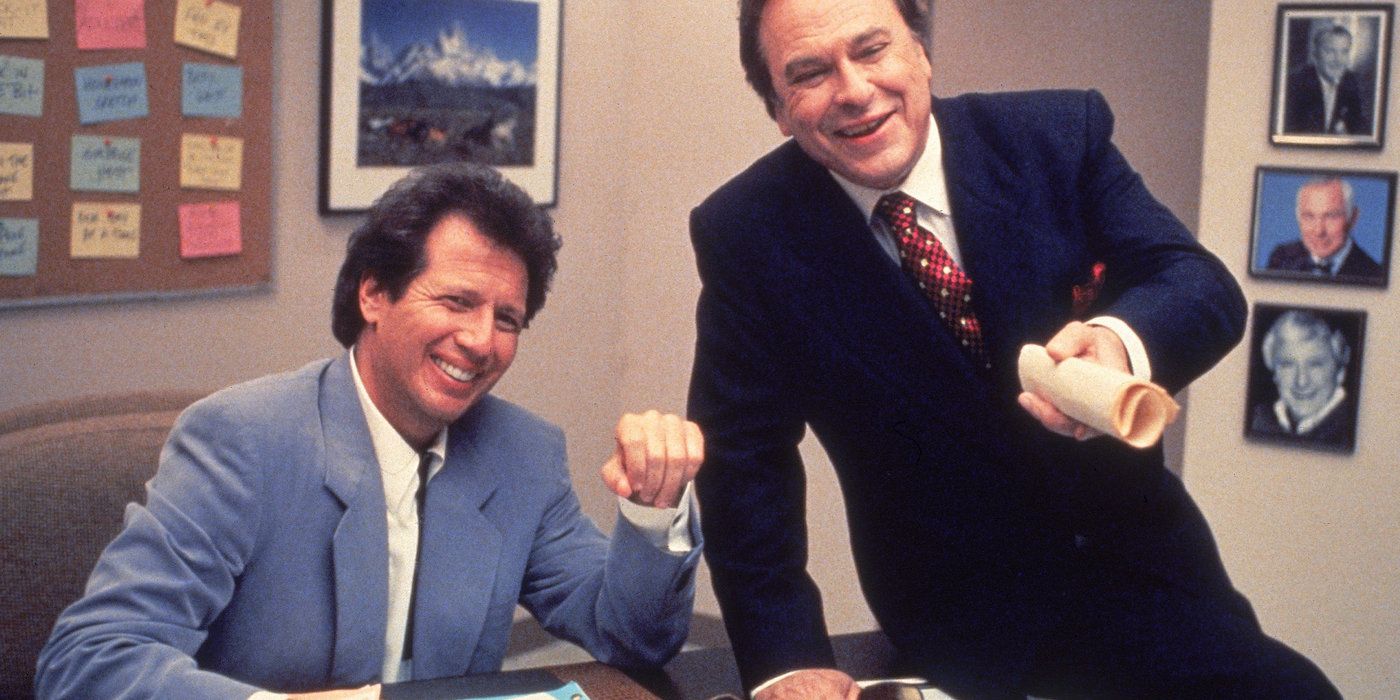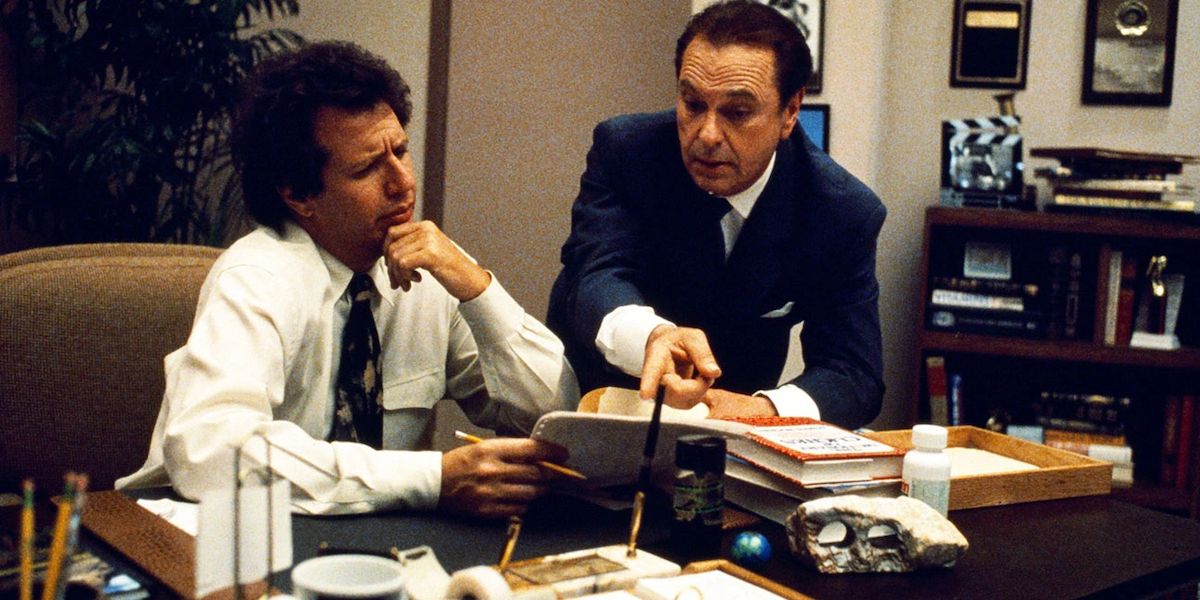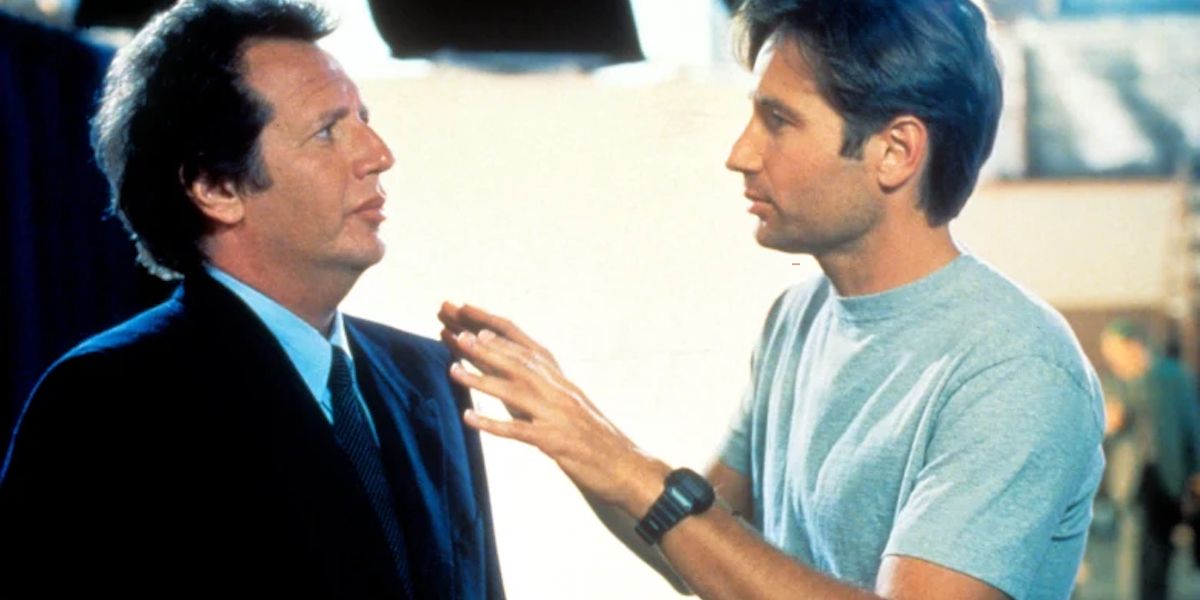Though Jerry Seinfeld’s web-turned-Netflix-series Comedians In Cars Getting Coffee was always intended to be a low-stakes, conversational affair, there is something indispensable about the Season 7 episode featuring Garry Shandling. First, because it was the last big onscreen appearance Shandling would make, as he passed away less than a year later, which makes Shandling’s self-effacing meditations on his career and his fellow comedians’ mortality all the more poignant. But also because the episode shows just how intertwined Shandling and Seinfeld’s careers were: they both started out doing comedy in L.A. at the same time, began doing late-night appearances at the same time, and even starred in their own groundbreaking TV shows at the same time, which were being shot on the same studio lot. But while Seinfeld has remained one of the most popular and beloved sitcoms of the ‘90s, The Larry Sanders Show has remained just as much of a cult show as it was when it aired, and yet has somehow had about as wide-ranging of an influence on modern TV comedy as any show to come along since it first aired 30 years ago.
The immense influence The Larry Sanders show has had compared to its ‘90s contemporaries with greater name recognition, is of course, not to be taken lightly. The ‘90s was truly one of the great decades for TV comedy, as it’s not surprising that the shows that defined that decade, such as Friends, The Simpsons, Frasier, etc., have continued to be bingeworthy touchstones long after they stopped airing, while the decade also saw its share of cutting edge cult shows as well (such as Mr. Show, The Kids In The Hall, Freaks and Geeks). However, none of those shows can really match the way in which The Larry Sanders Show changed TV comedy and how many shows can draw their lineage back to this show.
That said, the show wasn’t a huge source of ratings when it aired, and it didn’t really need to be, as it was airing on HBO before that network really took off with its original programming a few years later with the arrival of Sex In The City and The Sopranos. It also has been fairly hard to see since it ended its run in 1998, since its reruns only had a short stint in syndication on Bravo in the early '00s, and the show's music rights made it so a DVD box set of Larry Sanders didn’t arrive until 2010, when the "TV on DVD" boom had nearly run its course. Meanwhile, it wasn’t available on streaming until Shandling worked out a deal with HBO shortly before his death in 2016.
That said, Gary Shandling’s status as the creator-star of a perpetually underrated but groundbreaking show was always kind of by design. After making several well-received appearances on The Tonight Show with Johnny Carson throughout the ‘80s, Shandling became a recurring guest host for the show and was even offered his own late-night talk show that would follow Jay Leno’s Tonight Show. However, Shandling chose to do something a little more unusual. After creating and starring in It’s Garry Shandling’s Show, a show built on the very meta premise of having Shandling star in a sitcom while being very aware that he’s in a sitcom by continually breaking the fourth wall, he wanted to continue this trend of dissecting the artifice of TV and show business. The way he decided to do it was by making a sitcom about what goes on behind the scenes of a late-night talk show, when people break from the pre-rehearsed banter we see on TV and start talking to each other a lot more honestly.
This resulted in the show-within-a-show being shot on tape in front of a studio audience, while the behind-the-scenes part of the show was shot single-camera and without a laugh track. It’s easy to take for granted how rare this was at the time, since it’s now more common to see TV comedies without a laugh-track than with them, but the fact that Larry Sanders was one of the shows to help normalize this is just one thing that makes the show so essential to the history of television. By not having these characters have to hit laugh lines every minute or two, it allows them to feel much more grounded, while the funny moments are born more out of a very human discomfort than out of set-ups and punchlines. It also speaks to why the show didn’t always have to make its characters likable (Jeffrey Tambor’s sidekick Hank Kingsley could be particularly pathetic and repulsive), which the show could only really get away with on HBO, where its brand of cutting-edge comedy could flourish, free from the constant notes of network executives back when ratings really mattered.
It’s hard to even know where to start in terms of the most influential parts of The Larry Sanders Show, but let’s just begin with the show’s premise. Since The Larry Sanders Show aired, the backstage showbiz comedy has almost become a genre unto itself. You can see the format that Larry Sanders established in everything from 30 Rock to Entourage to BoJack Horseman to Hacks, where you have this somewhat cynical approach to tackling the various needy personalities that go into making show business go while milking laughs and uncomfortable truths in the process.
Larry Sanders writer (and comedy kingpin) Judd Apatow has consistently repeated Garry Shandling’s mantra for the show that it was “about people who love each other, but show business gets in the way”. It gets at how deeply human the show could be, and yet it was also in many ways this hip little refuge where the biggest stars of the ‘90s could show up and skewer their personas in any way they saw fit — another one of Larry Sanders innovations that now feels almost overdone. The amount of famous guest stars is too long to list, as they vary from people who were very famous at the time (everyone from Sharon Stone to David Letterman to Howard Stern) to people who would break out a few years later (Bob Odenkirk, a pre-Daily Show Jon Stewart). It speaks to the fact that while Larry Sanders wasn’t widely seen by the country at large, it was clearly a place that famous people wanted to be because there just was no other show quite like it.
Another regard in which you can see the influence on countless subsequent TV series is the way in which Larry Sanders was shot. It may not have been the first half-hour comedy to refrain from using a laugh track, but the way in which it created its own visual language feels particularly vital. The scenes that take place backstage or in the show’s office all have this very fly-on-the-wall aesthetic that borders on mockumentary. This would explain why Ricky Gervais has cited The Larry Sanders Show as a big influence on the UK version of The Office, which of course would spawn the U.S. Office as well as the likes of Parks & Recreation and Modern Family (whose creator Steven Levitan was actually a writer on The Larry Sanders Show). In Larry Sanders' visual style, you can also see another of the show’s innovations, as it established “the walk and talk” — a scene in which two characters are having a conversation and walking as the camera follows them from the front, a technique later popularized by The West Wing. According to Apatow, they would achieve this effect by having their cameraman wear roller blades, since they didn't have the budget for a Steadicam.
But perhaps The Larry Sanders Show’s most lasting legacy is that it was a comedy that didn’t go for the easy laugh. It was certainly a comedy first and foremost, but the show's tone and format freed up its writers and actors to really explore the scenes and characters in deeper ways than if they were in a traditional sitcom. You can see this in so much of TV comedy now, to the point where it’s almost become parody that so many half-hour shows often feel more like dramas than comedies. Also, the fact that Larry Sanders the character was not that far off from Garry Shandling the person makes the show a precursor to semi-autobiographical shows like Curb Your Enthusiasm, Girls, and Insecure. Then if its influence on TV comedy wasn’t enough, you can also see the show’s mix of punchlines and pathos in the films of Judd Apatow, who saw Shandling so much as a mentor that he made the HBO mini-series The Zen Diaries of Garry Shandling in 2018 in the wake of the comedian’s death.
Despite the immense impact of The Larry Sanders Show, another possible reason why its status as one of the great TV comedies has remained somewhat muted is that Garry Shandling kept a fairly low profile after the show ended. His movie career failed to take off after starring in the ill-received What Planet Are You From?, though he would still make the occasional appearance, such as co-starring in the DreamWorks animated film Over The Hedge or showing up in Iron Man 2 and Captain America: The Winter Soldier. However, the outpouring of love that Shandling received from all corners of the comedy world after his death in 2016 revealed what an impact he'd made on his colleagues, and it still doesn't entirely feel like he's gone, since there's a good chance you'll see his influence any time you put on any modern comedy series.



